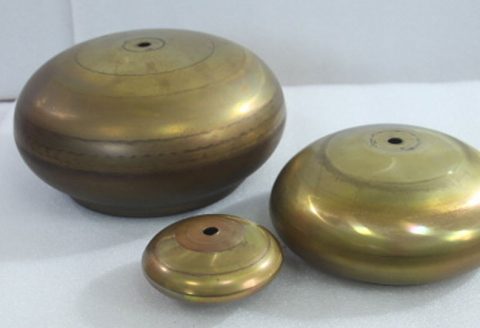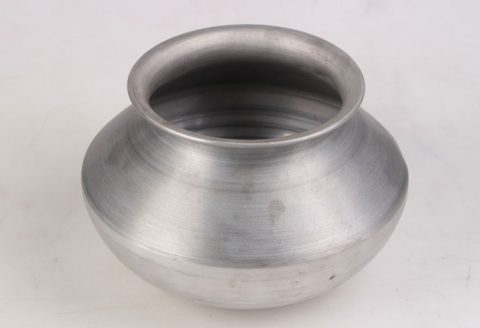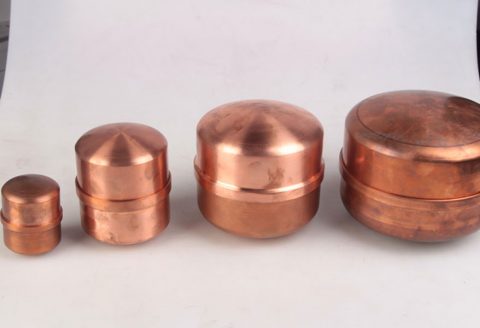Digital Manufacturing FAQs
We’re eager to get to know you, your business, and how we can help. From Metal spinning services to traditional manufacturing, prototypes to large-scale production runs, we’re ready to get to work.
1.What is the advantage of working with BE-CU? Why should I choose your company to make my parts?
Our industrial CNC metal spinning, CNC machining, die making and stamping services provide parts made directly from the customer’s 3D CAD model, reducing the likelihood of errors.
2.What companies do you work with?
Due to the proprietary and competitive nature of projects we work on, we do not disclose a listing of our customers. However, we do regularly receive permission to share customer success stories. Read our success stories here.
3.Is a Non-Disclosure Agreement (NDA) required to do business with BE-CU Spun Company?
An NDA is not necessary to do business with BE-CU Spun Company. When uploading your CAD model to our site, we employ state-of-the-art encryption and anything you upload is protected by confidentiality obligations. For more information, contact your account representative.
4.What industries use BE-CU Metal Spinning services?
We serve a variety of industries including medical device, automotive, lighting, aerospace, technology, consumer product, and electronics.
5.When should I use metal spinning versus stamping?
Before making the investment to have stamping tooling made or high-volume machining processes, you likely will want to test a part that is as close to the production part as possible. Metal spinning(1-10k) is the best option for this situation.
Additionally, engineers often need just one or maybe a few parts for test fixtures, assembly jigs, or assembly fixtures. Machining(CNC Turning) is the best option here as well, but traditional machine shops often charge a significant non-recurring engineering (NRE) charge for programming and fixturing. This NRE charge often makes getting very small quantities not affordable. The automated CNC machining process eliminates the upfront NRE costs and is able to offer quantities as low as one part at an affordable price and get parts in your hands in as fast as 1 day.
Metal stamping is better suited to support larger amounts of samples for functional or market testing, bridge tooling, or low-volume production. If you need parts before a steel tool can be made (typically 6 to 10 weeks with other molders) or your volume requirements don’t justify expensive steel production tooling, we can supply production parts to meet your full requirements (up to 100,000+ parts) in 1-20 days.
6.How many machines do you have?
We currently have more than 40 cnc spinning machines,punch, high speed stamping machine, presses, press brakes, and other manufacturing equipment. With our long history of growth, this number is always changing.
7.Are my parts made in the China?
We currently have 2 manufacturing facilities in the Zhongshan and Jangmen, all of which are producing spun metal parts.
8.How do I get a quote?
To get a quote for all of our services, simply upload a 3D CAD model on our site. You’ll get an interactive quote within hours with free design feedback. If there are problem areas in the submitted design, our quoting engine provides detailed information on the potential manufacturing issues and suggests possible solutions.
9.Can I quote my part with all services at once?
You can get a quote for spinning and deep drawing stamping.
10.What types of files do you accept?
We can accept native SolidWorks (.sldprt) or ProE (.prt) files as well as solid 3D CAD models from other CAD systems output in IGES (.igs), STEP (.stp), ACIS (.sat) or Parasolid (.x_t or .x_b) format. We can also accept .stl files. Two-dimensional (2D) drawings(As PDF)are accepted.
11.I don’t have a 3D CAD model. Can you create one for me?
We do not offer any design services at this time. If you need assistance creating a 3D CAD model of your idea, contact us via email and we’ll get you contact information for designers who are familiar with our process.
12.Does BE-CU offer finishing options and secondary processes with its services?
Enhanced finishing options and secondary processes are available for 3D printing,CNC machining, sheet metal, and injection molding processes.
13.Do you provide first article of inspection (FAI) service?
We offer FAIs on spinning and molded parts.
14.Where is BE-CU registered?
BE-CU has a registered office in Hong Kong, the main office is registered and based in Dongguan, China and our metal spinning manufacturing facility is based and registered in Zhongshan, China.
15.What if I am not happy?
If the parts reach you and for whatever reason you are not satisfied you should notify BE-CU within 7 days of receiving the parts and we will replace or rework for free.
16.What tolerances can you achieve?
BE-CU generally work to ISO 2768-1. We can sometime hit tighter tolerances, but this depends on the part geometry and material. If you require tighter tolerances than the ISO standard stated above these must be stated and negotiated at the time of quotation.
17.How do you manage quality?
Stage One: full DFM at time of quotation by highly experienced engineers. They will highlight any problem areas or make suggestions for changes. Stage Two: incoming inspection of materials with our own PIM Spectrometer Stage Three: Full QC inspection and report before shipping
18.What certifications does BE-CU have?
BE-CU is currently certified ISO 9001:2015, ISO 14001:2015 and IATF 16949:2016.
19.How can I pay?
We accept payment via bank transfer to Hong Kong or China. Payment is also accepted via Paypal though there is a 4% service charge for this. Paypal can accept certain credit card transactions.
20.What about credit and payment terms?
We generally request customers work to our standard payment terms for at least the first order. These are 50% deposit and 50% prior to shipping. It is possible to negotiate other payment terms such as Net 30, but these are agreed on a case by case basis.
1.What are progressive die metal stampings?
Progressive die metal stampings are custom metal stampings produced with a progressive die stamping machine. There are three types of common metal stampings: progressive die, multi slide and deep drawn. Of these three types, progressive die are the most common. These machines often run faster and with more accuracy due to pilots in the dies.
2.What advantages are there to deep drawn metal stampings?
Deep drawn metal stampings have several advantages. These parts stamped from a flat strip of material (stainless steel, copper, aluminum, etc.) and through a series of die sets drawn or stretched into a cup or tube shaped part. One advantage is the ability for the final part to be seamless. Other advantages of deep draw metal stamping include nearly limitless O.D. to I.D. combinations, different shapes other than round stampings, and better control of part dimensions.
3.What differentiates you from other metal stamping companies?
The biggest difference between BE-CU Spinning., Inc. and other metal stamping companies is our ability to produce three types of metal stampings (progressive die stampings, deep draw metal stampings and multi slide metal stampings). We also have a very diverse customer base (medical stampings, battery stampings, etc.). Most other metal stamping companies only serve a few industries and are more exposed to the fluctuations in these industries. BE-CU follows ISO 9000 and AS 9100 (aerospace) quality systems in all our operations.
4.What’s the difference between your precision metals stampings and fineblanking?
Fine blanking machines move from two directions. Both the punch and the die move toward each other simultaneously. Unlike a precision metal stamping machine which moves only the punch or die set while the other remains stationary. Fine blanking results in a part with no burr. The shear and break in custom metal stamping machines will always result in some burr on the part. BE-CU has the finishing facilities for cleaning and deburring any parts we manufacture, or your existing metal components.
5.Will you drop ship your stampings directly to my customer?
BE-CU daily ships our custom metal stampings around the world. We can drop ship, ship to a plater then on to you, or any other location. We can ship your precision metal stamping in infinite ways; boxes, returnables, tubs and by land, sea, or air.
6.When die stamping metal components, how do you choose the right process?
To choose between multi slide stamping, progressive die stamping or deep drawn stamping, our engineers concentrate on the complexity and shape of the desired finish part. For example progressive die stampings can have more piercings and multiple forms, flatter parts at faster speeds than deep draw or eyelet machines. Whereas, deep draw or eyelet stamping machines lend themselves better to production of stampings deeper or taller than ½ inch. Multi-slide or four slide machines work best for the production of multiple formed parts, wire forms or parts requiring the most accuracy.
7.Does BE-CU Spinning., Inc. stock finished metal stampings?
Most of the time the answer to this will be no, BE-CU produces metal stampings to customer specifications. However, there are times we will have stock of the exact alloy you need. However, even if we do not have stock, we can often have the tool completed for your custom stampings in ten weeks or less.
8.Does BE-CU Spinning., Inc. have any distributors?
BE-CU Spinning., Inc. does not work with any distributors. All of our custom drawn wire and metal stampings ships from our factory in Zhongshan,China.
This Nondisclosure Agreement (the “Agreement”) is entered into by and between _______________ with its principal offices at _______________ (“Disclosing Party”) and _______________, located at _______________ (“Receiving Party”) for the purpose of preventing the unauthorized disclosure of Confidential Information as defined below. The parties agree to enter into a confidential relationship with respect to the disclosure of certain proprietary and confidential information (“Confidential Information”).
1. Definition of Confidential Information. For purposes of this Agreement, “Confidential Information” shall include all information or material that has or could have commercial value or other utility in the business in which Disclosing Party is engaged. If Confidential Information is in written form, the Disclosing Party shall label or stamp the materials with the word “Confidential” or some similar warning. If Confidential Information is transmitted orally, the Disclosing Party shall promptly provide a writing indicating that such oral communication constituted Confidential Information.
2. Exclusions from Confidential Information. Receiving Party’s obligations under this Agreement do not extend to information that is: (a) publicly known at the time of disclosure or subsequently becomes publicly known through no fault of the Receiving Party; (b) discovered or created by the Receiving Party before disclosure by Disclosing Party; (c) learned by the Receiving Party through legitimate means other than from the Disclosing Party or Disclosing Party’s representatives; or (d) is disclosed by Receiving Party with Disclosing Party’s prior written approval.
3. Obligations of Receiving Party. Receiving Party shall hold and maintain the Confidential Information in strictest confidence for the sole and exclusive benefit of the Disclosing Party. Receiving Party shall carefully restrict access to Confidential Information to employees, contractors, and third parties as is reasonably required and shall require those persons to sign nondisclosure restrictions at least as protective as those in this Agreement. Receiving Party shall not, without prior written approval of Disclosing Party, use for Receiving Party’s own benefit, publish, copy, or otherwise disclose to others, or permit the use by others for their benefit or to the detriment of Disclosing Party, any Confidential Information. Receiving Party shall return to Disclosing Party any and all records, notes, and other written, printed, or tangible materials in its possession pertaining to Confidential Information immediately if Disclosing Party requests it in writing.
4. Time Periods. The nondisclosure provisions of this Agreement shall survive the termination of this Agreement and Receiving Party’s duty to hold Confidential Information in confidence shall remain in effect until the Confidential Information no longer qualifies as a trade secret or until Disclosing Party sends Receiving Party written notice releasing Receiving Party from this Agreement, whichever occurs first.
5. Relationships. Nothing contained in this Agreement shall be deemed to constitute either party a partner, joint venturer or employee of the other party for any purpose.
6. Severability. If a court finds any provision of this Agreement invalid or unenforceable, the remainder of this Agreement shall be interpreted so as best to effect the intent of the parties.
7. Integration. This Agreement expresses the complete understanding of the parties with respect to the subject matter and supersedes all prior proposals, agreements, representations, and understandings. This Agreement may not be amended except in a writing signed by both parties.
8. Waiver. The failure to exercise any right provided in this Agreement shall not be a waiver of prior or subsequent rights.
This Agreement and each party’s obligations shall be binding on the representatives, assigns, and successors of such party. Each party has signed this Agreement through its authorized representative.
| Disclosing Party
By: ____________________ Printed Name: ___________ Title: __________________ Dated: _________________ |
Receiving Party
By: ___________________ Printed Name: __________ Title: __________________ Dated: _________________ |


